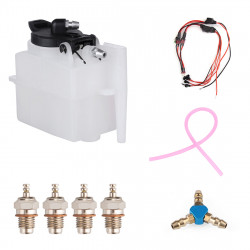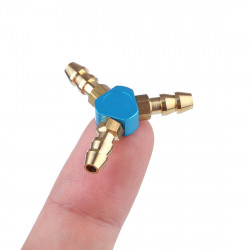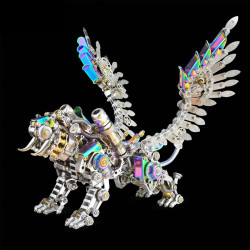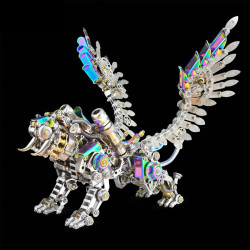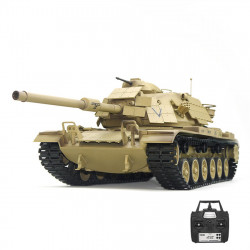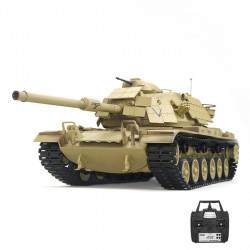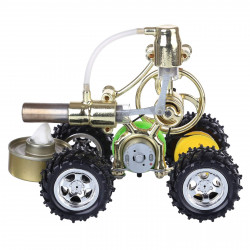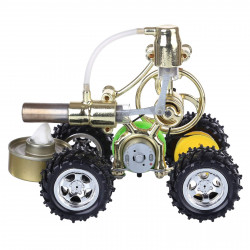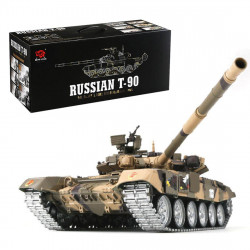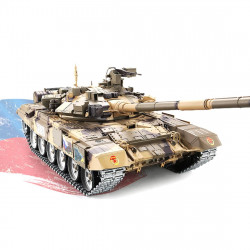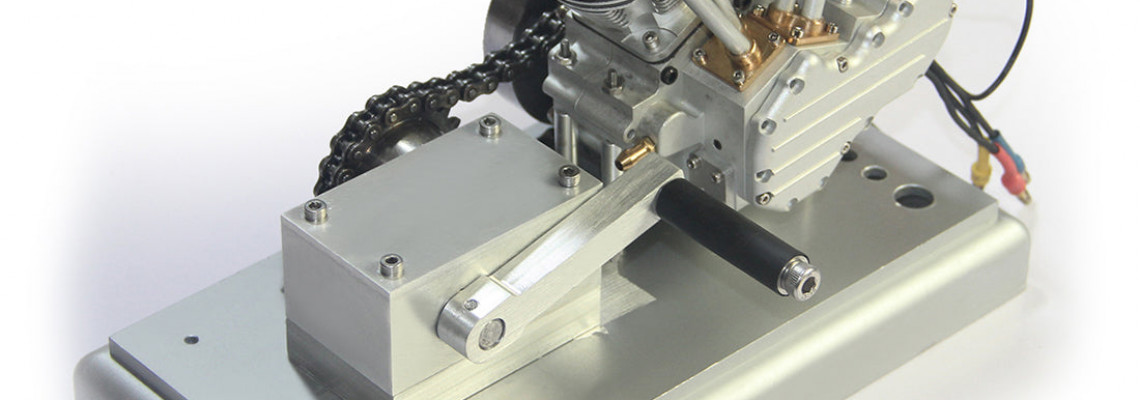
Understanding the Kickstart of V-twin Motorcycle Engine Model
The V-twin engine is a defining feature of Harley-Davidson's history and character. The kick start has been an important part of Harley-Davidson motorbikes for over a hundred years. The rider can start the engine by pressing a lever on the right side of the bike. This simple system is called the kick start.
The Harley V-twin engine uses a kick start. This is a traditional starting system.
It needs you to turn the engine by hand. You do this with a lever attached to the engine's crankshaft. The rider would apply pressure with their foot to depress the kick start lever, initiating and starting the engine.
Harley riders like this way of starting the engine because it offers a distinctive sensation and a sense of tradition. On the other hand, contemporary Harley models typically include electric starters.
The kick start is a fallback option on Harley-Davidson V-twin motorcycles if the electric starter malfunctions. You don't need a kick start with a Harley V-twin. The electric starter is the main way to start the bike. It is usually reliable.
Some Harley riders like the kick start. It reminds them of the early days of riding.
Back then, kick-starting was the only option. They enjoy it for its looks and memories. Some riders believe that using the kick start to start the engine makes them feel closer to the bike. They find it fun and exciting.
Having a kick start on a Harley V-twin ultimately boils down to personal preference. A kickstart might not be an option on some models, but it might be an essential feature or an add-on for others. Installing a kick start on your Harley-Davidson V-twin motorcycle can be worthwhile if you like how it looks or feels.
Components
Harley V2 motorcycles have a strong and dependable kick start system that gives users a pleasurable manual starting experience. The system has several parts, each serving a specific function.
When the rider presses the Kickstarter lever, it makes the Kickstarter gear and shaft rotate. The engine is turned over and started when the kick starter gear meshes with the main driving gear. The spring provides the needed resistance to ensure the kick starter gear connects properly with the engine's main drive gear.
First, kick start lever.
It is often found on the motorcycle's right side and attached to the kick start shaft. The shaft is a metal rod that connects to the engine's crankshaft and passes through the transmission. The engine begins when the rider applies pressure to the lever, causing the shaft to rotate and the crankshaft to turn.
When the rider lets go of the kick start lever, a ratchet mechanism stops it from going back to where it started. This guarantees that the engine won't stop turning until it starts.
Second, Kick start shaft.
The kick starter lever is connected to the engine using this metal shaft that passes through the casing. The rider uses their foot to control a lever often found on the right side of the motorcycle.
A gear mechanism connects the engine's crankshaft to the kick start shaft. The engine starts when the rider applies pressure to the kick start lever, which rotates the gear and crankshaft. The mechanism has a spring. It goes back to its starting position when the rider pushes the lever.
Third, Kick start gear.
This little gear meshes with the crankshaft and transmission gears and sits at the end of the kick starting shaft. The force the rider needs to apply to the lever to start the engine depends on the gear ratio between these parts.
This shaft starts at the engine's transmission, travels through the motorcycle's main drive, and ends at the kickstarter lever. To guarantee a smooth and dependable start, it must be sturdy enough to withstand the pressures exerted by the rider and have correctly aligned and greased gears.
Fourth, Spring.
Inside the engine casing is a coiled spring that resists the kick starting gear, enabling it to mesh with its main driving gear. Springs are a crucial part of the suspension system on a motorcycle. They contribute to a smoother ride for the rider by absorbing some of the shocks and vibrations caused by the road surface. The motorcycle's appropriate height and balance are also upheld by the springs.
Coil springs are the most popular springs used in motorcycle suspensions. When the suspension is engaged, a sequence of tightly wound metal coils that make up this spring compress and expand. The spring's stiffness, or spring rate, controls how quickly it contracts and expands. Stiffer springs give a rougher ride, while softer springs provide a smoother and more comfortable experience.
Usually, mechanics use a shock absorber to support the spring and absorb the shocks and vibrations that the spring produces. The shock absorber uses hydraulic fluid and a piston. It absorbs and releases energy from the spring. This process turns the energy into heat.
What Happens Inside The Engine Upon Kick Starting?
In essence, you start the combustion process that powers an engine when you kick start it. An outline of what transpires inside the engine during a kickstart is provided below:
Fuel is mixed with air: For combustion to occur, the correct ratios of gasoline and air must be mixed via the carburetor or fuel injection system.
Intake stroke: A mixture of fuel and air is brought into the combustion chamber when the engine piston descends during the intake stroke.
During the compression stroke, the piston moves up. This squeezes the fuel and air mixture into a smaller space. As a result, the temperature and pressure increase.
Ignition: The spark plug ignites at the peak of the compression stroke, setting the gasoline and air mixture on fire. This tiny explosion forces The piston downward during the power stroke.
Exhaust stroke: The exhaust valve allows the waste gases from combustion to be released from the engine as the piston rises again during the exhaust stroke.
Repeat: The piston then descends on the intake stroke to suck in a fresh mixture of fuel and air, and the process is repeated.
A v-twin engine's intake stroke, which pulls the fuel and air mixture into the combustion chamber, is virtually started when the engine is kicked started. The spark plug firing and subsequent combustion begin the rest of the process.
Is it Hard to Make A kickstart for a motorcycle V-twin engine model?
The size, shape, and materials of the engine all impact how hard it is to jumpstart a V-twin motorbike. Creating a kickstart for a motorcycle v-twin engine can be difficult. This is especially true for people who lack engineering or mechanical skills. A thorough understanding of the engine's internal mechanisms and the parts needed to assemble the kickstart mechanism are prerequisites.
Furthermore, manufacturing the starter assembly might be a labor-intensive operation requiring specific techniques and equipment. It's crucial to remember that, to prevent accidents, safety measures should always be followed when using tools and machinery.
How to kick start the Motorcycle?
Although it can be a little tricky, starting a vintage motorcycle is integral to the riding experience. The general procedures for starting a motorcycle are as follows:
Verify the gasoline and oil levels before attempting to start the engine. Make sure there is plenty of both. Fill them up to the suggested level if they are low.
Activate the fuel valve: If the fuel valve on your motorcycle is accessible, open it to let fuel enter the carburetor.
Adjust the choke: If the choke on your motorcycle is equipped, turn it to the "on" position to facilitate starting, mainly while the motor is cold.
Turn the ignition key to "on." This allows the electrical system to work. Make sure the key is in the "on" position.
Make sure the motorcycle is in neutral before attempting to start the engine. Trying to start the engine when the motorcycle is in gear can be risky.
If your motorcycle has one, Prime the engine by gently pushing down on the starter lever after pulling the decompression lever. To ensure the engine is primed, repeat these steps a few times.
Start the engine: After priming, plant your foot on the kickstart lever and give the engine a forceful, purposeful kick. This procedure might need to be repeated several times until the engine starts.
Choke adjustment: Move the choke to the "off" position once the engine is operating. This will facilitate the engine's smooth startup and operation.
Give the engine time to warm up: Give the motorcycle a few minutes before attempting to ride it.
Note: The precise procedures may differ significantly based on the motorcycle's make and model; thus, always consult the owner's manual for detailed instructions. When driving a motorcycle, wear the appropriate riding gear and adhere to all safety regulations.
7 Tips when you are trying to kick start the Motorcycle Engine Model
It can be physically taxing to kick start a motorbike engine, particularly one that is larger or older. Remember to pause when necessary and avoid overdoing it. See a mechanic to ensure everything is in working condition if you're having problems getting the engine to start.
Check the Fuel and Air: Before starting the engine, ensure sufficient fuel in the fuel tank and that the air filter is clean.
Neutral Gear: Before kicking the engine, ensure the motorcycle is neutral. Kick starting a motorcycle in gear can cause it to lunge forward, which is dangerous.
Brake: When kicking start the motorcycle, use the back brake to keep it stationary. This will stop the motorcycle from moving when you depress the kick start lever, either forward or backward.
Compression Release: Many of them incorporate a compression release lever or button to lower engine pressure when kicking a motorcycle. As a result, it will be simpler to start the engine.
Smooth Motion: Use a soft, methodical motion to kick start the engine. Instead of just jabbing at the lever, generate momentum with a deliberate motion and release it fast.
Repeat: If the engine doesn't start on the first kick, try again. The engine may need to be started several times, mainly if the motorcycle has been idle.
Safety Gear: Boots, gloves, and a helmet are among the appropriate safety gear for kicking a motorbike engine. This will shield you from an accident, such as a fall.
Electric Start Vs. Kick Start: which one is better?
There are two ways to start the engine of a motorcycle: electric start and kick start. The piston must move to compress the mixture and burn it for the motorcycle engine to start.
Traditionally, one must pedal to start a motorcycle. Your foot steps down on the starting lever, transferring the momentum to the crankshaft through the gear and causing it to rotate.
The main method is to use the start lever. This lever sends motion to the front of the clutch. It lets the clutch start even when it is closed. This is how many classic underbone motorcycles operate.
Transmitting the movement of the starting lever to the transmission is also incidental. Through the clutch, this technique must transfer the movement to the crankshaft. The engine cannot be started if the clutch is closed.
Using gears, the electric starting method lowers the starter motor's speed while increasing torque and causing the crankshaft to rotate. To start the car using electric ignition, you only have to press the switch on the proper hand grip.
A high-power starter motor is easy to use. However, it needs a battery that supplies a lot of electricity.
Right now, most motorbike batteries have a voltage of 12V. In the case of electric-start bikes, frequent starts are necessary to preserve the battery's characteristics, as otherwise, the long-term storage battery is prone to power loss. Many electric-start motorbike batteries require replacement within a year or two of use.
The phrase "foot-operated motorcycle" is untrue. Let's examine the campaign from the following angles.
1st, Ease of Use.
Using an electric start is significantly simpler—all you have to do is turn the key and push a button.
Kick starting requires more physical exertion since you must ignite the engine with your leg.
2nd, Reliability.
In general, electric start systems are more dependable than kick start ones. You don't have to worry about the starter motor breaking down or the battery running low.
Worn-out parts or operator error can make kick start systems prone to failure.
3rd, Maintenance.
Maintenance for an electric start is minimal to nonexistent.
You need to adjust kickstart systems regularly to guarantee optimal performance.
4th, Cost.
The additional parts needed for electric start systems—such as the starter motor, battery, and wiring—make them more costly.
5th, Convenience.
Systems with electric starters are more practical, particularly in the winter. It functions effectively in every climate.
It is challenging to kick start the engine in chilly conditions.
Electric start systems are more affordable, dependable, and user-friendly; their main drawback is their high Cost. Motorcycles that have fewer electronics still employ a pedal-type start.
Kick start systems are popular with riders who prefer a simpler, traditional motorcycle experience. The starter lever's quick rebound can lead to foot pain. This can happen if you struggle to understand the pedal-type start method. It can be a bit tricky to learn.
The electric start approach will be the most common now and in the future. After all, motorcycles with electrical configurations are becoming more and more common. Even with its high energy consumption, electric starts are still more often used since they are easier to use and more convenient.
Choosing between a kick start and an electric start depends on what the rider prefers. It also depends on the type of motorcycle they own.
The reason for INSTALLING THE KICKSTART ON CISON CHOPPER
When it comes to building our things, we have an option. It has to do with the times we live in. It is an issue of way of life. But, in the past, riding a bike was a different way of life, and everyone who drove a car was also blamed for it.
On the other hand, metal and rock and roll are lifestyles. Disco was a way of life. And that is now gone. Thus, all of these lifestyles exist among us now.
For this reason, I chose to put the Kickstart on my V-Twin motorcycle build. It was not an easy task, but it wasn't easy, and this is the best product I have ever seen come from China. It is hugely overkill, yet strangely, it was helpful for my build.
What is the Electric start plan for our CISON V-twin V2 Engine Four-stroke Air-cooled Motorcycle RC Gasoline Engines?
We have been trying to start the engine with electricity. However, we have faced several problems with the gear drive and the one-way bearing. We will keep working to fix these issues.
We are checking if a good reducer is available. The original reserved position is not good, and the reducer touches the teeth. The factory's gear machine will be scrapped if it fails.
We are working hard at it. We will quickly upload pertinent images or videos to social media if there is news.
On Harley-Davidson motorbikes, the kick start has a crucial purpose, though it may seem like a thing of the past. It allows riders to feel the excitement of kicking their bike to start it. It also provides a backup way to start the engine if the battery or starter motor does not work.
For motorcyclists who value the conventional approach of starting a bike, kickstarting a motorcycle can be a fulfilling experience. It's also possible to view it as a relic from a more innocent era of motorcycling history.
To add excitement to your motorcycle experience, we created our motorcycle kick start in 2022. This kick start is an important part of the Cison Panhead V-twin engine. It connects to the brand's rich heritage and tradition.
